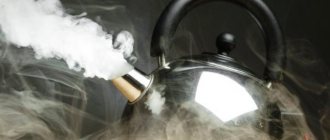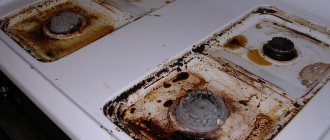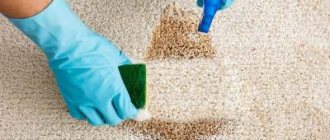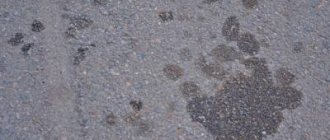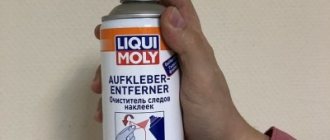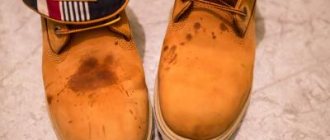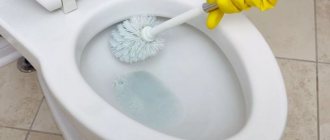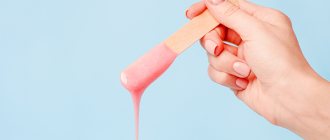Not everyone knows how to clean a candlestick from wax, although at first glance it seems like a simple task. But those who have experienced removing wax from objects know that it can be far from easy. To clean a candlestick from wax, you can use various methods, including simple soaking in warm water. The best way to clean a candlestick is based on the material it's made of—a glass candlestick should be cleaned differently than a silver one. Today we will talk about how to clean wax from iron, bronze, glass and other types of candlesticks. Read the following article on the pages of the magazine.
How to remove wax from a wooden surface?
So what needs to be done:
- drop olive oil onto the wax stain
- wait 1-2 minutes
- wipe gently with a soft cloth
- this will not only clean the table from the stain, but also take care of the table surface in this place
Aug 11
2022 Interesting materials:
How to take L arginine? Laminate in the room what class? What is an airport lounge? Life is strange 2 how many episodes? The dress is shedding, how to fix it? The fabric is fading, how to fix it? Lipo 6 black how to take? Lipo 6 black ultra concentrate how to take? What is flaxseed? What does the green card lottery give?
How to clean wax from a glass candle holder
Glass and ceramic candlesticks can be cleaned in the easiest way - they are simply washed thoroughly with warm soapy water or washing powder. This not only removes wax residue from the candlestick, but also gives it shine.
If you are wondering how to clean wax from a glass candle holder, then you will find the following information helpful . The first and most effective way is to treat the glass surface with boiling water or hot air from a hair dryer. The wax will melt and can be easily removed. But a thin film of the substance will still remain on the surface of the glass. To remove it, you can use any alcohol-containing liquid. Soak a cotton swab in cologne or glass cleaner and wipe the surface. Use a cotton swab to treat hard-to-reach areas.
There is another option . Place the candle holder in the freezer for 30 minutes. Low temperatures make the wax very brittle and crumbly. Removing it from the surface of the glass will become much easier. If the candle holder is too large to fit into the freezer, then use ice to cool the wax. Place ice in a plastic bag and cover the waxed area with the bag. Use a piece of paper or plastic card to remove the hardened wax. You can wash off any remaining wax using a sponge and dishwashing detergent.
Use the oven
- Preheat the oven to 90 degrees. Prepare a baking sheet and parchment paper to make cleanup easier.
- Place the candlesticks at a sufficient distance from one another, upside down. The wax will melt and flow out, and thus you will flood the entire oven with it.
- After fifteen minutes the wax will melt. Do not leave the wax inside the oven for too long. It can easily ignite.
- Don't forget to open the window while working.
- Remove the pan from the oven and place it on a heatproof surface.
- Use heat-resistant gloves or an oven mitt to avoid getting burned.
- Remove any remaining wax from the sides of the candle holder using paper towels.
- If you cannot completely clean the jar of wax, use sunflower oil or soap and water.
Use the freezer compartment of your refrigerator
- Before placing the candlestick in the freezer, let it cool. This is done because due to a sudden change in temperature, hot glass can easily crack. Take the candlestick in your hand, if you are not hot, you can safely act.
- Leave the glass in the freezer for about an hour. When cold, the consistency of the wax becomes denser, its volume decreases in size, and you can easily remove it from the edges and bottom of the candlestick - just shake the glass cup.
- Use a kitchen knife to remove any small residue. The glass will become shiny and transparent if you treat its surface with a cotton pad generously moistened with vinegar.
How to clean wax from a bronze candlestick
Bronze is an alloy of tin and copper that is susceptible to oxidation. This means that a candlestick given for an anniversary will sooner or later be covered with a green coating. It is almost impossible to stop the process, but cleaning a bronze candlestick at home is quite possible. We present to your attention a list of tips that will allow you to carry out cleaning quickly and safely, without resorting to the help of jewelers.
How do you usually clean bronze? Want to make your old candlestick shine again? Then stock up on the following available means: baking soda and lemon juice, ordinary table salt and vinegar, oxalic acid, ammonia, acetone, chicory powder, sulfuric acid, sawdust and chalk, peas.
You don't need to buy absolutely everything listed above. This is a list of substances that are most effective in cleaning bronze.
How to Clean a Bronze Candlestick Without the Correct Equipment
How to clean a bronze candlestick without the correct equipment and necessary protective equipment? Don’t forget about this nuance; prepare protective gloves, a bowl and napkins. We may also need a cloth rag and wool rags.
The specifics of cleaning church utensils are determined by the dirt that appears on it. As a rule, this is wax or paraffin, lamp oil or other fat, soot or soot of various types, dust and rust stains of non-ferrous metals. Usually these contaminants are not present on their own, but in various combinations.
To clean the utensils, you need the following tools and materials: a hardwood spatula, a kitchen sponge for cleaning dishes, a napkin for dry cleaning, a paper towel (you can also use paper napkins, but they are softer and tear quickly).
In general, the cleaning process consists of the following operations:
- removal of wax and dust contaminants;
- removal of soot and fat;
- removal of oxide films (rust);
- getting shine.
If you do not have any contaminants, then simply skip the corresponding operation, but the processing sequence must be maintained. If you perform several cleaning operations, do not forget to remove the remaining product used at the end of the previous operation.
Warning
- Do not pour the contents of the candle holder into the sink, as this may clog the pipes.
- Buy higher quality candles, because cheap candles contain petroleum in addition to wax. Because of this, its removal becomes more labor-intensive.
- Glass may crack if exposed to very high or very low temperatures.
- Never use a microwave oven to remove wax from glass. Wax fumes will damage the heating element.
- Do not wash candle holders with wax residue in the dishwasher. This may damage it as the wax will clog the filter.
- Pour two tablespoons of water into the bottom of the jar if you are using long-lasting candles. This will prevent too much wax from sticking to the bottom.
How to remove wax from a glass cup - the methods are voiced in the video
Lifehacks #1 How to remove wax from a glass candle holder?
Properties of a candle
Candles acquire plasticity already at a temperature of 35 degrees Celsius, and begin to melt at 60-70 degrees. Wax, stearin and paraffin do not dissolve in water, and are poorly soluble in alcohol - so these liquids cannot be a very effective means of removing candle residues from a candlestick.
So, it turns out that it is the temperature effect that will help clean your favorite interior items.
How to clean wax from a brass candlestick
If the candlesticks are brass and varnished, then be very careful.
Before placing a candle in a candlestick, drop a little water on the bottom to make it easier to clean later. If the candlesticks are brass and varnished, then be very careful. Before placing the candle in the candle holder, add a little water to the bottom to make it easier to clean later.
In order to preserve the original appearance of an item made of bronze or brass, follow the rules of operation, storage and care:
- Avoid prolonged contact of metal with moisture. Dry the item thoroughly after cleaning or let it dry naturally.
- Rub the surface with a soft cloth to restore the glossy shine and shimmer.
- To remove tarnish, dip the item in a solution of table salt and then rub with a slice of lemon.
- Toothpaste will help you quickly and effectively clean bronze objects. Squeeze a little product onto a soft cloth and treat the entire surface. Then rinse with running water and wipe dry.
- To prevent contamination, rub the surface with paraffin or wax. Such substances leave a film that protects the metal from environmental influences.
- Store small items (coins, earrings, rings and other jewelry) in velor bags separately from other items. Place a bag of silica gel nearby to absorb excess moisture.
- Carry out preventive cleaning using available products, and also regularly rub the surface with a piece of suede or flannel.
If a brass candlestick begins to darken and dull, then use chemical polishing agents. They are sold in kitchenware stores. If this does not help, use abrasive polishing. For example, pastes for “abrasive” polishing, “GOI” paste.
Sources
https://www.infpol.ru/134910-kak-ochistit-podsvechniki-ot-gari-i-voska
https://hozpedia.ru/kak-pochistit-bronzu-v-domashnih-uslovijah-bystro-i-jeffektivno.html#title1
https://fb.ru/article/381576/kak-ochistit-podsvechnik-ot-voska-deystvennyie-sposobyi
https://extraslots.ru/zaschita-i-otdelka/kak-ochistit-podsvechnik-ot-parafina-kak-ochistit-podsvechnik-ot-voska/
A little history
Beeswax (bees produce it to build honeycombs) began to be used for candles back in the 16th century. However, not everyone could afford it, since wax was a rather expensive material. In modern times, beeswax candles are also expensive.
In the 18th century, candles made from spermaceti, an animal substance obtained during whaling, began to be used for lighting.
And a hundred years later, stearin was discovered. It consisted of a mixture of fatty acids. It almost completely replaced the previous two materials for candles. It is solid, burns well, does not smoke and is quite economical.
In the 20th century, paraffin appeared - petroleum wax, the cheapest flammable substance.
In modern times, you can also find candles made from palm wax and gel. Various scented oils are added to candles to create specific scents.
You can dissolve wax in hot water
The easiest and fastest way to clean a glass cup from wax or paraffin residue is to dissolve it with hot water and rinse off the residue.
Do not pour hot wax into the sink under any circumstances, you risk clogging the plumbing, the wax will harden and block the water drain!
The melting point for wax is 64 degrees, for paraffin - 50 degrees. When heated together with water, paraffin and wax float to the surface.
Before cleaning the candlestick from wax, put a saucepan with a small amount of water on the fire. We lower the glass candlestick to the bottom so that water does not flow inside. Heat the water until it becomes hot tea. Wait for the wax to melt so you can easily remove it with a paper towel. Throw the remaining wax into the trash bin along with the napkin. Wash the cup with hot water and regular dish soap.
You can just use very hot tap water. Place the jar in the sink, blocking the drain. Now pour hot water directly into the jar. The remaining wax should melt and float to the surface. The water should cool down within fifteen minutes. You can easily remove wax floating on the surface.
Use a knife to remove any residue. The wax should be soft and pliable. If you want to get the effect of pure transparent glass, then moisten a dish sponge in hot water, and lightly wring it out, apply it to the walls of the candlestick. A damp paper towel will also work for this purpose.
Wax removal methods
The material used to make candle devices varies. It can be a metal alloy: brass or bronze. Often the product is plated with gold. When cleaning with powder, such a coating may be damaged and cracked. Many people prefer ceramic candlesticks; they look beautiful or laconic in the interior and do not require careful maintenance. Wax is easier to remove from ceramics than from metal surfaces. Moreover, the price of a ceramic candlestick is much cheaper than a metal one.
Wax is a substance of plant origin, consisting of esters of fatty acids. It is temperature sensitive and melts when heated and takes on a liquid form. Wax does not dissolve in water; if you apply drops of water on its surface, they will roll off. The compound can be destroyed using heat or surfactants.
Matches or toothpick
If the candlestick is made of glass or other durable material, you can try to scrape off the wax with a toothpick or match. Paraffin particles are well removed from the wall using the mechanical force exerted on them. This method is suitable for removing small areas of wax. A sharp match will help you get into the most inaccessible places: into bends, curls. As a result, the candlestick is cleaned and has its original appearance.
Hot water and powder
Under the influence of elevated temperature, the wax becomes soft and plastic. This property is used to remove it from the surface of the candlestick. It is important to remember that not all candlesticks tolerate contact with water. Metal products begin to rust when interacting with an aqueous environment. Corrosion will form and the candlestick will be damaged.
The object is placed under a stream of hot water at a temperature of 50-60 degrees and kept for several minutes until the paraffin softens. If the amount of wax is large, it will take a long time. Remove the paraffin from the warm candlestick using a thin object such as a toothpick. Wax residues are removed using ordinary washing powder. It contains active substances that destroy the lipid complex.
Microwave and cloth
If the candlestick is made of glass, it can be heated for 20-30 seconds in the microwave. If the device is made of metal, then it is heated in the oven. Heating is carried out carefully and in a short period of time. Quickly take out the heated object and remove the melted paraffin using a clean, dry cloth. This method is one of the most effective, but requires extreme caution when heating.
Dishwashing liquid
Dishwashing liquid contains compounds that destroy the structure of fats. This method is suitable for candlesticks made of sensitive materials such as bronze or brass. If you use mechanical cleaning on such products, scratches may remain on the metal surface. To remove wax, soak the candlestick in warm water. Apply a few drops of detergent to a sponge and apply it to problem areas with light movements. You can use a brush, but only with soft bristles. The wax is removed from the surface of the candlestick, and the device itself looks like new.
Freezer
This method is intended for candle holders who are afraid of water. The candle device is placed in the freezer for several hours. After the time has passed, the item is removed. The wax is easy to clean without leaving any residue. To make this method more effective, it is suggested that before freezing, fill the candlestick with warm water and place it in the freezer for 2-3 hours. After this, the ice is removed along with the remaining paraffin.
Using a hairdryer is a thermal method of influencing wax. The item is heated with hot air for several minutes, then the melted wax is removed using a clean, dry rag. The hairdryer should be kept at a short distance from the object. This method is convenient because hot air penetrates hard-to-reach places and causes the paraffin to melt.
General cleaning recommendations
- When burning a candle, there is no need to wait for it to burn completely. It is removed when the candle level is already minimal. In this case, the contamination will have a small area, and you will not have to scrape out the frozen melted wax at the base of the candlestick.
- Do not use a knife or other sharp objects as they will scratch the surface. The candlestick will be damaged and can be thrown away.
- In difficult cases, when the devices cannot be subjected to any of the described cleaning methods, use a special liquid - Asidol. It is sold in household goods. The cost of the liquid is 100 rubles. The product is intended to remove grease and oxidized films on metal surfaces. Asidol even cleans out minor corrosion. It is important to remember that you should work with the product wearing protective gloves and in a ventilated area. The liquid contains ammonia and has a pungent odor. The liquid is poured into the candlestick and left to act for 5-10 minutes, then the remainder is drained along with pieces of extracted wax. Asidol will help clean the product from paraffin compounds. In addition, it will give the surface of the candlestick additional shine and beauty.
- If heat treatment is used using a hairdryer or oven, glass products may crack. Glass does not tolerate high temperatures well. Therefore, heating is carried out at a minimum increase of 50-60 degrees with the oven door open or at a certain distance when using a hair dryer.
Source
Samovars, Turks and teapots
The outer surface can be cleaned using the methods described above. But with the internal part the situation is more complicated. This is especially true in cases where limescale forms in a vessel for boiling water, be it a kettle, samovar or pot.
You can use a proven method using potato peels:
- We pour the washed skins remaining after peeling the potatoes into the object to be cleaned and pour boiling water over it.
- Then boil the water with the skins in a cleaned container for about an hour.
- After boiling, drain the contents of the dishes and wash them in the usual way.
- After completing the cleaning procedure, it is necessary to boil the water in a container several times, changing it after each boiling. This is done in order to remove any remaining plaque.
Vinegar essence 60-75% also works well when cleaning copper utensils. The method of application is simple:
- Pour 300 ml of essence into a cleanable teapot, samovar or Turk.
- Add water (preferably warm) until the container is completely filled.
- Let the solution stand for about two hours.
- After this, drain the liquid and clean the vessel with a brush.
- After this, rinse the product thoroughly with water. This is necessary so that the remaining acid leaves and does not subsequently affect the taste of the water.
Peel or citric acid works very well to remove scale from copper cookware. They use either peels from any citrus fruits (lemon, tangerine, orange, lime), or the fruits themselves, or simply dry citric acid:
- Depending on the chosen type of cleaning, they place into the vessel: skins up to half the volume, chopped fruits in the same quantity, or two or three packs of citric acid.
- It is necessary to ensure that the heated vessel is not full to the brim, otherwise, during boiling, some of the liquid will splash out and stain the surface of the heating device and the vessel itself to be cleaned.
- The contents must be boiled for half an hour.
- Afterwards, drain the water and wipe the walls of the product with a brush. If the limescale deposit is not completely cleared, repeat the procedure.
- After completing the procedure, you need to boil several portions of water so that the citric acid contained in citrus fruits is washed from the walls of the vessel.
The simplest and most affordable cleaning method is to purchase a special descaling product for teapots.
Then we follow the instructions included with the product itself. Cleaning copper utensils from scale is no different from cleaning utensils made from other materials. But I would like to make a small remark regarding samovars. It consists of many different parts. Therefore, it is advisable to first disassemble the samovar and only then clean it using the method you have chosen.
READ MORE: The correct sharpening angle of a knife for a plane and features of the work
How to easily remove wax from church candlesticks made of silver and gold
When it comes to candlesticks made from precious metals such as silver, they need to be cleaned very carefully. Place the candle holders in the freezer for at least 20 minutes and then use your fingers to remove any wax shards. Residues can be removed using silver polish or alcohol. In both cases, do not use excessive force to avoid damaging the silver.
The use of candlesticks is necessary to create a romantic and cozy atmosphere. Very often, drops of wax remain on the candlestick from a burnt candle. And to remove them, you will have to try.
You will need: warm water, soft cloth, freezer, white alcohol, polishing agent, Axidol.
Scrape off as much wax as you can with wooden popsicle sticks or your fingers. For easier cleaning, soften the wax with a hairdryer or hot water. Never use a knife or anything metallic, as this will damage the surface of the candlestick. Wash off the remaining wax with white spirit by applying it to a soft cloth. It is sold in household chemical departments.
How to easily remove wax from church candlesticks, method number 2
There is another way to clean a candlestick. Place it in the freezer for an hour. After this, immediately remove large pieces of wax. Remove any residue with hot water. If the candlesticks are gold, place them in a bowl of hot water and cover them with powder. Then wipe them with a soft cloth.
If the candlesticks are gold plated, remove the wax and wash in warm water and dish soap. Then wipe dry and spread with Asidol. Wait 2 minutes and wipe off. Rinse again and wipe dry. Now rub with chalk until shiny.
Note! Do not put metal candle holders in the freezer as they may be made of multiple metals. This can cause them to expand and contract differently when the temperature changes.
How to clean wax from an iron candlestick
This gorgeous metal candlestick can be difficult to clean, but it can be done! Start by boiling water in a large saucepan that contains all the metal candle holders. Leave them there until the water has cooled completely and the wax has left the candlestick. At the end, wipe the candlestick very well and put it back in place.
Are you afraid that water will ruin your precious antique candlesticks? Then you can use the freezing method mentioned above.
Use the blade to clean the table
- A sharp blade or scraper is perfect for these purposes. They can easily remove wax from a flat surface, such as a glass table. If you are afraid that the blade will leave marks on the surface, try using a small plastic knife or a special scraper for working with ceramics. Work carefully to avoid damaging the fragile glass surface.
- Continue using a dry fleece cloth to remove any wax flakes. Continue working with the knife, removing wax in short strokes, until the entire table is clean. Use glass cleaning spray and paper towels to finish the job.
